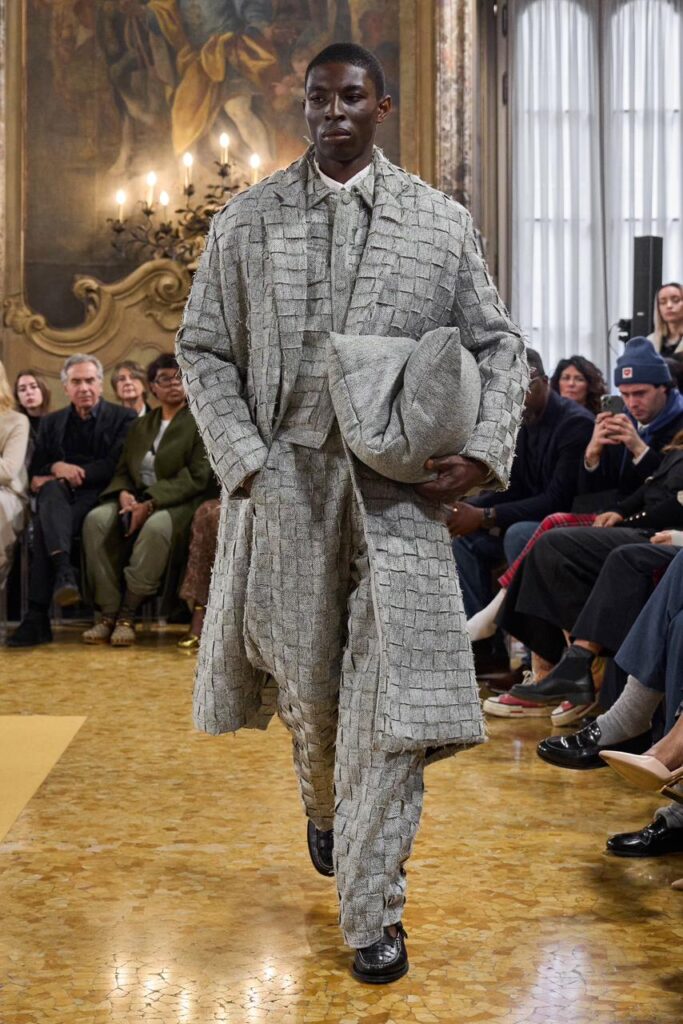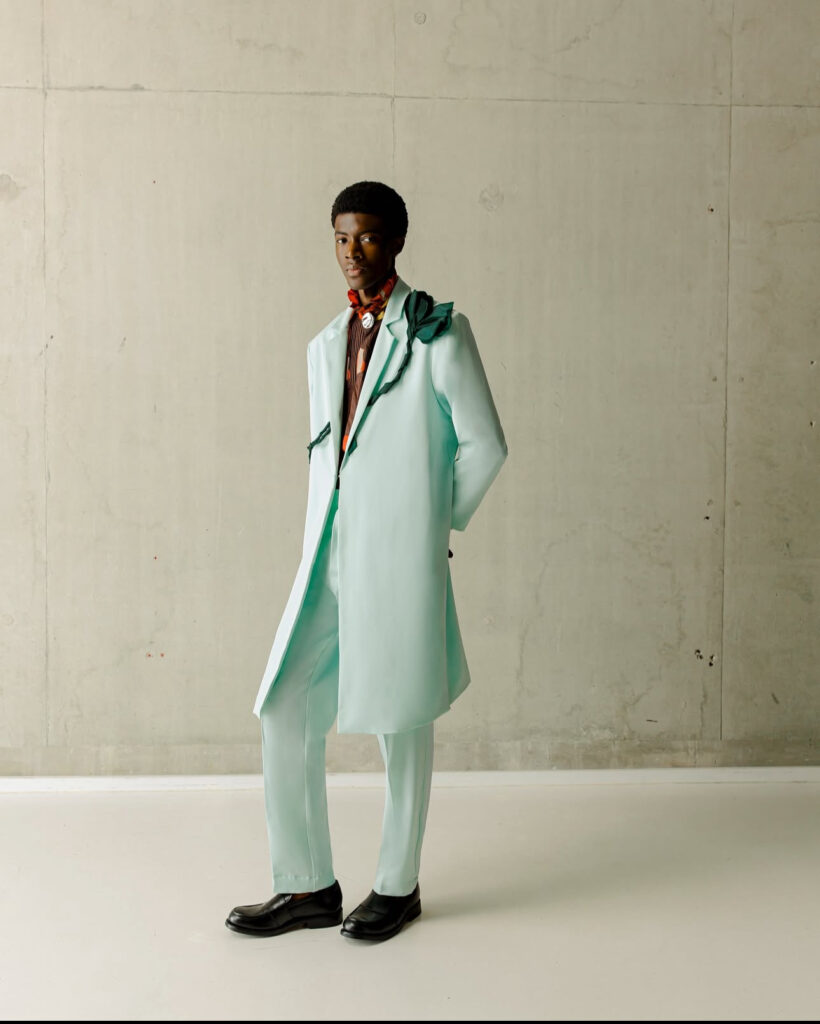
The art of tailoring has long been a site of Black resistance, elegance, and reinvention. From the studied poise of precolonial kings to the audacious flamboyance of the Sapeurs, tailoring has shaped how the world sees Black style — and how Black people see themselves. The 2025 Met Gala theme, Superfine: Tailoring Black Style, affirms this legacy. And for African designers, it’s not just an aesthetic — it’s a lived inheritance.
In this fourth installment of our Threads of Influence series, Guzangs turns its lens toward contemporary African brands whose work embodies the Superfine spirit not as an echo, but as origin. These designers are not only masters of cut and cloth; they are cultural cartographers, memory keepers, and future-builders, using tailoring to tell stories stitched with history, innovation, and pride.
From Lagos to Johannesburg, Dakar to Douala, these designers are shaping the narrative of modern Black elegance—bold in craft, rich in meaning.
Orange Culture (Nigeria)

Adebayo Oke-Lawal’s Orange Culture is tailoring for the tender-hearted rebel. Blurring gender lines with fluid forms and emotive fabrics, his chartreuse suit ensembles with hand embroidery speak to a new masculinity—introspective, vulnerable, and defiantly unbound. If Superfine is about reimagining identity through silhouette, Orange Culture is already leading the charge.
Ozwald Boateng (Ghana)
The first Black tailor on Savile Row, Ozwald Boateng is tailoring royalty. His legacy lies in fusing classic British cuts with African cosmology—deep purples, kente-inspired linings, and sharp shoulders steeped in symbolism. As a 2025 Met Gala co-chair, Boateng’s presence signals what the theme truly honors: craftsmanship rooted in legacy, elevated by innovation.
Atafo (Nigeria)
Mai Atafo’s tailoring is clean, architectural, and romantic. But beneath the crisp lapels lie subtle nods to Nigerian royalty—his floor-length blazer gowns and embroidered shawl collars carry echoes of regality. Atafo doesn’t just design suits; he sculpts modern monarchs.
Rich Mnisi (South Africa)
To wear Rich Mnisi is to wear myth. Bold, genderless, and sculptural, his pieces are hymns to Tsonga culture reimagined through a futuristic lens. Mnisi’s tailored jumpsuits—often padded, caped, or patterned in ancestral symbology—represent Black sartorial power at its most expressive.
Imane Ayissi (Cameroon)
A rare African name on the Paris haute couture calendar, Imane Ayissi brings traditional materials like barkcloth and Faso Dan Fani into dialogue with French couture craftsmanship. Expect him to deliver a regal wrap jacket layered over kente panels—a silhouette where heritage and high fashion converge effortlessly.
Mimi Plange (Ghana)
Mimi Plange redefines what African fashion can be. Her silhouettes—corseted, pleated, and hand-embossed—draw from Victorian drama, tribal motifs, and Afrofuturist imagination. Based in New York, Plange is proof that African aesthetics are not bound by geography but enriched by diasporic vision.
Tokyo James (Nigeria)
Equal parts elegance and edge, Tokyo James fuses West African sharpness with British street sensibility. His tailored trenches in metallics and mesh, studded suits, and sculptural collars reflect a fearless reimagining of masculinity—perfectly aligned with Superfine’s ethos.
Tongoro (Senegal)
Founded by Sarah Diouf, Tongoro is redefining accessible luxury. Her designs—structured yet fluid—channel bold West African prints into dramatic, wearable shapes. With each look manufactured on the continent, Tongoro makes a quiet but powerful case for sovereignty in design.
Tolu Coker (Nigeria)
Tolu Coker’s tailoring is ancestral memory in motion. With family archives, protest slogans, and Yoruba textile traditions printed into her garments, she transforms fashion into a living archive. Think tailored blazers cut from silk organza, layered over personal history—where the body becomes a site of storytelling.
David Tlale (South Africa)
When it comes to grandeur, few deliver like David Tlale. His suits are sweeping, architectural, and unapologetically bold. Whether it’s velvet, tulle, or dramatic capes, Tlale’s tailoring takes up space—in fabric, in history, in emotion.
These designers are not responding to a theme — they’ve been dressing the part for generations. Their work reflects a long lineage of self-styled resistance and refined defiance, where every stitch holds memory, and every silhouette tells a story. This is the essence of Superfine—not borrowed, but born from the continent itself.